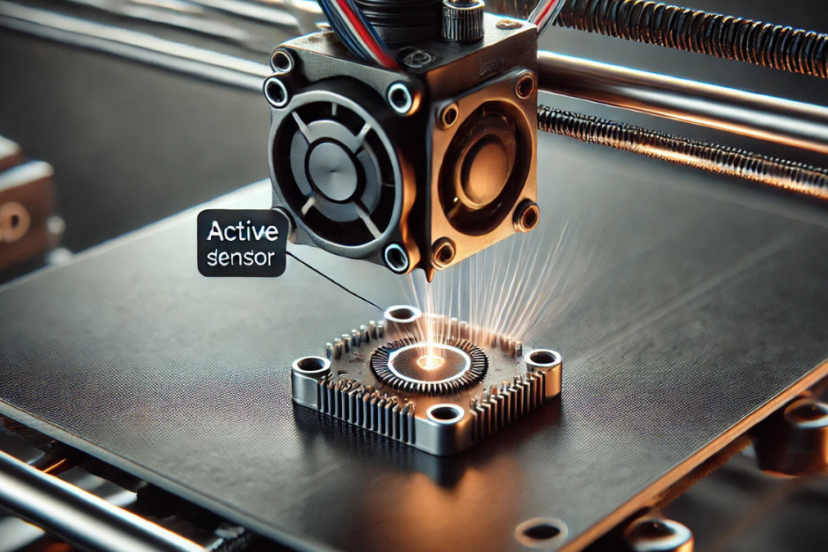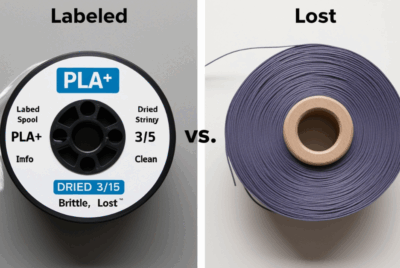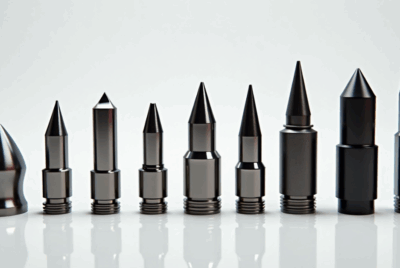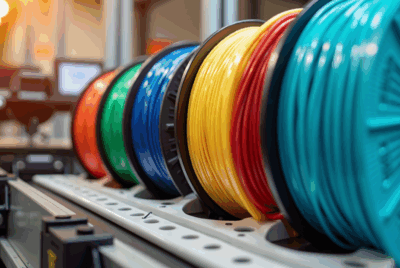The Ultimate Guide to the 10 Best Smart Filament Sensors for 3D Printers
3D printing is an amazing technology, but it’s not without its challenges. One of the most frustrating issues many of us face is filament problems—whether it’s a break, a tangle, or inconsistency in diameter. Imagine you’re working on a large print project, only to find out midway that your filament has failed, and your print has come to a screeching halt. That’s where smart filament sensors come in, a true game-changer in the 3D printing world.
In this guide, we’ll dive deep into the top 10 smart filament sensors for 3D printers. These nifty devices help prevent print failures by detecting issues with the filament before they ruin your work. Let’s explore how these sensors work, why they’re essential, and which models are worth investing in.
Why Smart Filament Sensors Matter
You’re working on a large print, you’ve set everything up, and you’re ready to go… but what if the filament breaks, tangles, or runs out during the print? It’s a nightmare that can result in wasted time, material, and energy. Smart filament sensors are here to solve that problem.
These sensors are designed to detect when there’s a break, tangling, or inconsistency in your filament, and they automatically pause your print process. This means you can avoid botched prints and preserve both your materials and your patience.
How Smart Filament Sensors Work
Smart filament sensors are like the watchdogs of your 3D printing process. They constantly monitor the filament’s movement, ensuring that it feeds smoothly and consistently through the extruder. When they detect any disruption—whether it’s a filament break, a jam, or a diameter issue—they automatically stop the print and alert you.
Some sensors even have built-in recovery systems, which allow your printer to resume once the issue is resolved. This feature is especially helpful for long prints that take several hours, ensuring that your print is safe even if you’re not constantly watching it.
Top 10 Smart Filament Sensors
Let’s take a look at the top 10 smart filament sensors that will elevate your 3D printing experience.
1. Creality Ender 3 V2 Filament Sensor
Creality’s Ender 3 V2 is one of the most popular 3D printers out there, and its built-in filament sensor is one of its standout features. This sensor will pause your print the moment it detects a filament break or run-out, allowing you to resume without losing your progress. It’s reliable, affordable, and one of the best for beginners.
2. Prusa i3 MK3S+ Filament Sensor
The Prusa i3 MK3S+ is a high-end 3D printer known for its precise performance. Its filament sensor is capable of detecting even the slightest filament issues, whether it’s a break or inconsistency in feed. The i3 MK3S+ will pause the print and notify you, allowing you to fix the problem before it leads to failure. It’s an excellent choice for those looking for premium quality.
3. Anycubic Chiron Filament Sensor
The Anycubic Chiron offers large-format 3D printing, and its filament sensor makes sure your prints are successful, even on the largest projects. It’s designed to pause your print if the filament runs out or breaks, giving you peace of mind while tackling complex, large-scale prints.
4. E3D Titan Aero Filament Sensor
E3D is known for its high-performance extruders, and the Titan Aero filament sensor is no exception. It ensures smooth and continuous filament feeding. Whether you’re using flexible filaments or standard PLA, the sensor is reliable enough to catch any issues and stop the print from going awry.
5. Monoprice Select Mini 3D Printer Filament Sensor
Monoprice’s Select Mini is a fantastic budget-friendly 3D printer, and it comes with a filament sensor built-in. It works well for users who want to minimize failures in smaller projects. It’s an excellent choice for those just starting with 3D printing.
6. Artillery Sidewinder X1 Filament Sensor
The Artillery Sidewinder X1 is known for its large print bed and smooth performance. With its filament sensor, you can rest assured that filament problems won’t ruin your print job. It’s a feature-rich printer that adds value with its sensor’s ability to detect filament inconsistencies and pauses prints when necessary.
7. FLSUN QQ-S Pro Filament Sensor
The FLSUN QQ-S Pro features an easy-to-use filament sensor that detects when the filament is running low or breaks. This 3D printer is known for its ease of use, and the sensor adds another layer of reliability to ensure uninterrupted printing.
8. Anycubic i3 Mega Filament Sensor
The Anycubic i3 Mega is a favorite for beginners, and its filament sensor ensures smooth operation. Whether you’re printing with PLA or PETG, this sensor detects filament problems and halts the process before the print fails, making it an excellent option for those new to 3D printing.
9. XYZprinting da Vinci Jr. 1.0 Filament Sensor
The XYZprinting da Vinci Jr. 1.0 is a versatile 3D printer that includes a filament sensor as a standard feature. It’s particularly user-friendly, making it great for those who want reliability without all the complicated setups.
10. FlashForge Adventurer 3 Filament Sensor
FlashForge is a leading brand in the 3D printing world, and its Adventurer 3 filament sensor is no exception. It’s designed to prevent filament-related failures, ensuring your prints come out as expected every time. This printer is a fantastic all-in-one option with the sensor to keep things running smoothly.
Why You Need a Smart Filament Sensor
Think of a smart filament sensor as an insurance policy for your prints. It ensures that you don’t waste materials or time on failed prints. A sensor that detects filament issues early can save you hours of reprinting and can prevent disappointment from ruined prints.
Choosing the Right Smart Filament Sensor
When selecting a smart filament sensor, consider the following factors:
- Compatibility: Ensure that the sensor is compatible with your 3D printer model.
- Sensitivity: A good filament sensor will be able to detect even the slightest issue, such as filament tangles or inconsistent diameter.
- Ease of Installation: Look for sensors that are easy to install and require minimal effort to set up.
- Durability: Choose a sensor built to last and handle the demands of your printing projects.
Installation Tips for Smart Filament Sensors
Installing a smart filament sensor is usually a simple task, but here are some tips:
- Follow the manufacturer’s instructions carefully.
- Ensure proper alignment: The sensor should be positioned so that it can properly monitor the filament’s movement.
- Test the sensor: After installation, test the sensor by running a test print and checking its response to filament issues.
How to Troubleshoot Common Filament Sensor Issues
While smart filament sensors are reliable, they can occasionally experience issues. Here’s how to troubleshoot:
- False positives: If your sensor keeps pausing the print, check for tangled filament or extruder issues.
- No detection: If the sensor isn’t triggering when there’s a filament break, check the sensor’s connection and alignment.
- Sensitivity issues: If the sensor is too sensitive or not sensitive enough, you may need to calibrate it.
Conclusion
Smart filament sensors are essential tools for any 3D printer. They ensure that your prints are successful by detecting issues with the filament early and preventing costly failures. Whether you’re a hobbyist or a professional, having the right filament sensor can make all the difference in achieving high-quality prints every time.
FAQs
- What is a smart filament sensor?
A smart filament sensor is a device that detects filament issues, such as breaks, jams, or inconsistencies, and pauses your print to prevent failures. - Do I need a smart filament sensor for my 3D printer?
While not required, a smart filament sensor can save you time, filament, and frustration by ensuring your prints run smoothly. - How do I install a smart filament sensor?
Installation usually involves attaching the sensor to your 3D printer and ensuring it’s aligned with the filament feed path. Refer to your printer’s manual for specifics. - What happens if the filament sensor detects a problem?
The sensor will pause the print and notify you, allowing you to address the issue before it causes a print failure. - Which 3D printer models are compatible with smart filament sensors?
Many 3D printers, including models from Prusa, Creality, and Anycubic, come with built-in filament sensors or offer compatibility with third-party sensors.




